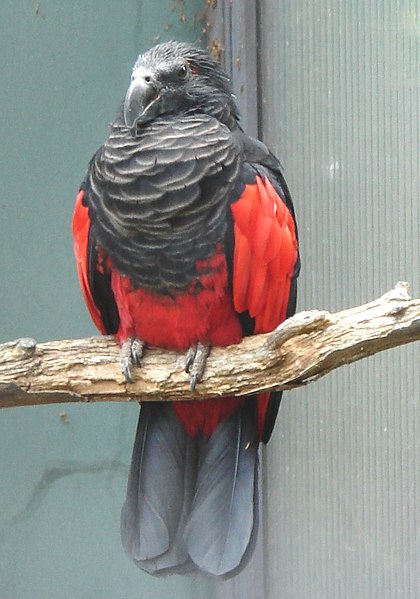Recent research on avian vision at Sweden’s Lund University has revealed that birds lose their ability to see color at twilight. These findings have inspired me to consider how we might use lighting in order to improve the health and breeding potential of captive parrots, finches, doves and other birds.
The Findings
The article, published in the Journal of Experimental Biology, points out that birds need 5-20 times the amount of light as do humans in order to see color. By day, birds have extremely sharp color vision, and see both UVB light and a far greater range of colors than do people. However, their color vision disappears at twilight – far earlier in the day than does that of any other animal studied thus far.
Light’s Effect on Captive Birds
I believe it is important that we consider the type of light we provide to our birds…the zoos in which I have worked are now experimenting with full spectrum lighting in their bird exhibits.
Poor light quality and intensity may explain the difficulties experienced in breeding otherwise hardy bird species in captivity. Light can have some unexpected implications for reproduction. Captive female desert iguanas (lizards native to Southwestern North America), for example, rarely reproduce unless given full-spectrum lighting…without UVB light, they cannot see the pheromone trails laid down by males.
Similar scenarios are likely at work where birds are concerned. Indeed, there are indications that proper levels of UVA and UVB light encourage natural behaviors, reproduction and strong immune systems in captive birds.
Providing Birds with Appropriate Light
Fortunately, a number of options are open to bird owners. Exposure to natural sunlight (bearing in mind that glass and plastic filter out UVB rays) is the best of these, but when this is not possible a high quality Full Spectrum Bird Lamp should be utilized.
Further Reading
The new findings on light intensity should be valuable in explaining certain aspects of bird evolution and behavior. For example, the chicks of Gouldian, firetail and zebra finches, all of which nest in dark tree hollows, sport light-reflecting nodules near their mouths. To read more about this survival strategy, please see my article Flashy Finch Chicks.
 That Bird Blog – Bird Care and History for Pet Birds
That Bird Blog – Bird Care and History for Pet Birds

 Having worked for a bird wholesaler during the heyday of parrot imports, I was well-acquainted with many unusual species by the time I first laid eyes on a Pesquet’s. I had even seen some of the relatively few photos of it that existed at the time. However, I was awestruck upon coming face to face with a group on my first day as bird keeper at the Bronx Zoo…photos did not do justice to this parrot oddity.
Having worked for a bird wholesaler during the heyday of parrot imports, I was well-acquainted with many unusual species by the time I first laid eyes on a Pesquet’s. I had even seen some of the relatively few photos of it that existed at the time. However, I was awestruck upon coming face to face with a group on my first day as bird keeper at the Bronx Zoo…photos did not do justice to this parrot oddity. Conures in the genus Aratinga are often suggested as birds to purchase for those who wish to keep macaws but lack experience (Aratinga means “little macaw”). Brilliantly colored but quite loud and with an indomitable spirit, conures do indeed resemble their larger cousins in many ways. Most do best in
Conures in the genus Aratinga are often suggested as birds to purchase for those who wish to keep macaws but lack experience (Aratinga means “little macaw”). Brilliantly colored but quite loud and with an indomitable spirit, conures do indeed resemble their larger cousins in many ways. Most do best in